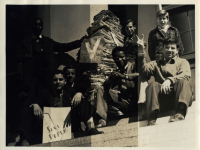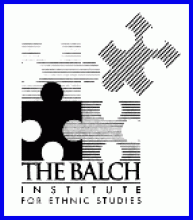During his time as teacher and director of public schools in East Harlem, Leonard Covello encouraged a closer relation between the community and the schools. His teachings, publications, and visual records capture the cultural diversity taking place in New York by the mid-twentieth century, and are a valuable record we can use to explore the ethnic and immigrant history of the United States.
Using Covello’s collection as inspiration, this lesson seeks to encourage students to learn about their own communities and think in broader terms about cultural diversity and immigration. The first part focuses in the life of Leonard Covello and the development of East Harlem. Use Covello’s biography, written by Shawm Weldom, as well as various other sources to discuss the history of East Harlem. Another key article is “Finding Faces in the Leonard Covello Collection,” by Samantha Spott. This piece will teach them, from a personal experience, the process of preservation and the value of photographs to access the past. With this practice, they will learn about the cultural diversity of their locality, and the value of historical conservation. The use of visual and written sources highlights the importance of material culture to preserve and study the past, and will provide students the opportunity to select and analyze different types of information.
As additional background on local history, you can have students read the excerpts on Philadelphia immigration history, taken from The Encyclopedia of Greater Philadelphia attached to the lesson. These articles provide general information on the impact of immigrant groups to Philadelphia’s development, from 1870 until the present.
Para ver una explicación de la Unidad en español, click Aquí.




